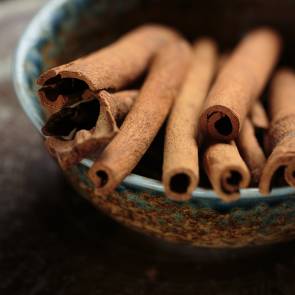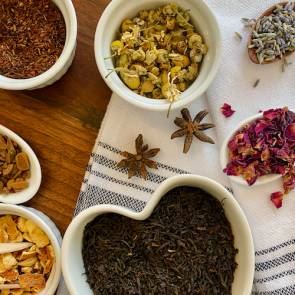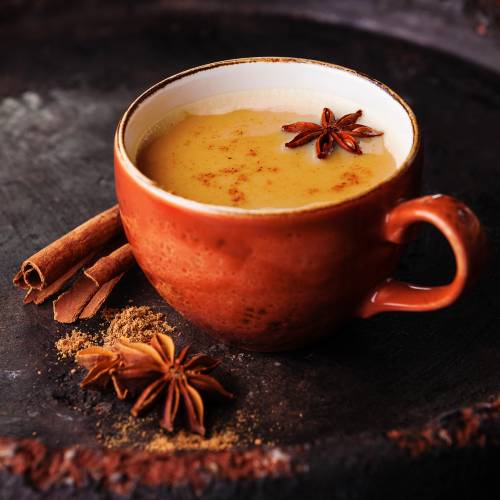
If you walk into any Indian family kitchen and ask for the recipe for perfect masala chai, it is guaranteed that you will never get the same answer twice. There is no hard rule for this beverage, but that doesn’t mean there aren’t easy guidelines to follow.
First things first, chai means tea. If you say “can I have some chai tea”, you’re essentially saying “can I have some tea tea”. What you likely mean to say is masala chai (as in, tea with a blend of spices). Masala is the Indian term for a mixture of spices.
Masala chai was around far before tea made it’s way to India. Some date the history up to 9000 years ago! Before the 1930’s when tea was introduced to the Indian market, masala chai was simply a blend of spices infused for medicinal properties in Ayurveda and did not contain any tea.
If you want to make your own traditional style masala chai from home, there are only a few things you will need:
- Milk (you can use any type of milk)
- Water
- Sweetener (optional)
- Strong black tea, such as Strong Assam or Irish Breakfast
- Spices of your choice. See below for a breakdown of popular spices and reasons to use them.
Tips:
- Try an equal proportion of water to milk to start.
- Use 1-2 teaspoons of black tea for each 250 mL of liquid, depending on how strong you like your masala chai.
- Add 1-2 cardamom pods per 250 mL liquid, 1 cinnamon stick per pot (typically), and 2-3 cloves per pot.
Directions:
- Boil water.
- Add spices and simmer for 5-10 minutes.
- Add milk, heat just until the mixture begins to bubble, decrease heat before the milk froths and spills over.
- Add black tea and simmer another 5-10 minutes.
- Alternatively, add black tea and spices at the same time and simmer together for 5-10 minutes. The benefit of simmering spices before adding tea is a stronger spice flavour. You can also achieve a stronger spice flavour by increasing the amount of spices used.
Serve hot. Masala chai is often served sweetened. You can add sweetener to the pot, or allow each person to add his/her own sweetener if desired. Spices like fennel and cinnamon can increase sweetness without added sugars as another alternative.
Ingredient Summary
| Ingredient Name | Description | Ayurveda | Modern Health |
|---|---|---|---|
| Cardamom | A must, cardamom has a subtle sweetness and distinct flavour, it is used in almost every masala chai recipe. |
Warming, good for digestion, excellent for balancing Kapha, Enhance circulation, digestion and metabolism. Balances kapha and vata. |
Anti-inflammatory, anti-oxidant, aids digestion, good to relieve symptoms of asthma. |
| Cloves | Another regular in masala chai recipes, clove adds sweetness, a flavour reminiscent of gingerbread. Too much can become bitter quickly. | Enhance circulation, digestion and metabolism. Balances kapha and vata. | Antioxidant, anti-stress, anti-inflammatory, anti-bacterial, regulates blood sugar levels. |
| Cinnamon | You would be hard pressed to find any chai made without this naturally sweet spice. | Warming spice, balances digestion, helps relieve cold and flu symptoms, helps relieve headaches. Balances kapha. | High in anti-oxidants, lowers blood sugar, anti-inflammatory, anti-viral, aids digestion. |
| Ginger root | Ginger root adds some spice and a lot of flavour. Use finely chopped fresh ginger, dried ginger root pieces or dried ginger root powder depending on your personal preferences. | Aids digestion, enhances appetite, pacifies stomach, good for joint health. Balances vata and kapha. | Treats nausea, including nausea caused by morning sickness, may reduce muscle pain, anti-inflammatory, lowers blood sugar, aids digestion, relieve symptoms of cold and flu (may also relieve cold and flu) |
| Black pepper | Black pepper is often found in chai, usually in lower quantities. It adds heat and flavour. | Helps oxygen flow to the brain, enhances digestion and circulation, stimulates appetite. Balances Kapha and Vata | Improves digestion, lowers blood pressure, increases metabolism, reduces cold and cough, good for respiratory system (and asthma relief), high in antioxidants. |
| Fennel Seeds | Fennel is a sweet spice with licorice-like flavours. | Cooling and warming, fennel is a tridoshic herb (good for all constitutions). Balances digestion, good for breath and dry mouth. Increases milk flow for breast feeding mothers. | Relieves bloating, digestive issues, stomach upset, upper respiratory tract concerns. Prevents anemia, reduces risk of heart disease, improves brain function, boosts immunity |
| Nutmeg | Nutmeg is less frequently found in masala chai, but is a great option to add more depth to the flavour with a balance of sweet and spice. | Warming, relieves pain, circulates blood. Good for respiratory system. Relieves bad breath. Detoxifies. Balances Kapha and Vata. | Calming, relieves pain, aids digestion, improves skin, detoxifies, promotes hydration. |
| Turmeric | Turmeric is used not only for health benefits, but for the rich flavour and colour it adds to masala chai. | Promotes digestion, eases joint pain, supports liver function, detoxifies, nourishes the heart and circulation, boosts immunity. Tridoshic, but can aggravate pitta and vata in excess. | Anti-inflammatory, antioxidant, lowers risk of brain disease and improves brain function, lowers risk of heart disease, helps treat depression, detoxifies, relieves pain. |
| Bay leaves | While not the most common ingredient, bay leaves are used by many to balance flavours and add more of a savoury undertone to chai. | Warming. Helps respiratory issues, aids digestive issues, eases joint pain (including arthritis pain), boosts immunity. Balances kapha and vata. | Rich in nutrients, aids digestion, relieves respiratory issues, anti-inflammatory, regulates blood sugar levels. |
| Fenugreek | Fenugreek is the least commonly found ingredient in chai on this list, but one worth mentioning. It adds a unique rich flavour and an abundance of health benefits. | Aids digestion, relieves cold and flu, boosts immunity, improves respiratory health, eases joint pain, improves reproductive health, aphrodisiac, eases joint pain, relieves pain from menstrual cramps, promotes healthy lactation. Balances kapha and vata. |
Regulates blood sugar levels and cholesterol levels, reduces symptoms of heartburn, anti-inflammatory. Increases libido, promotes healthy lactation, relieves menstrual cramps, and quite a few more potential benefits. |
Besides the ingredients listed above, you can add many other ingredients! Rose petals and/or lavender are often used for a floral sweetness. Rose pairs really well with cardamom. Here are a few other ideas:
- Chili flakes
- Anise seed
- Cumin seeds
- Corriander seeds
- Saffron
- Carob root
- Chicory root
- Cacao nibs
- Coconut oil
- Fruits


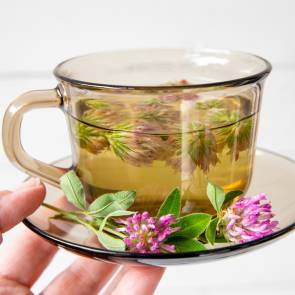
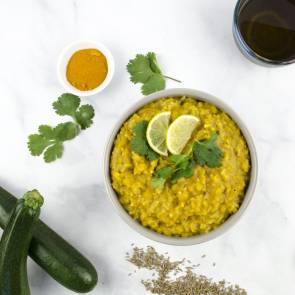
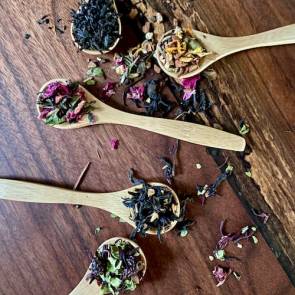
__medium.jpg)

